Top 21 HVAC Innovations and Trends to Watch in 2025
The world of HVAC (Heating, Ventilation, and Air Conditioning) is constantly evolving. As we look ahead to 2025, several innovations and trends are shaping the future of this essential industry. Understanding these developments can help homeowners, professionals, and businesses make informed decisions. Here are the top 21 HVAC innovations and trends to watch for in 2025.
1. Smart HVAC Systems
Smart HVAC systems are becoming mainstream. These systems allow you to control your heating and cooling from your smartphone or smart home devices. They learn your habits and preferences, optimizing energy use and enhancing comfort.
2. Increased Energy Efficiency
With rising energy costs, energy-efficient HVAC systems are crucial. Look for systems that incorporate advanced technologies to minimize energy consumption without sacrificing performance.
3. IoT Integration
The Internet of Things (IoT) is revolutionizing HVAC. Sensors and devices communicate in real-time, allowing for predictive maintenance. This connectivity reduces downtime and improves system longevity.
4. Improved Indoor Air Quality
Indoor air quality (IAQ) remains a priority. Innovations in filtration and air purification technologies enhance air quality, reducing allergens and pollutants within your space.
5. Renewable Energy Sources
Utilizing renewable energy sources, like solar power, is gaining traction. HVAC systems designed to operate efficiently with solar energy can significantly reduce energy bills.
6. Enhanced Zoning Systems
Innovations in zoning systems allow for customized heating and cooling in different areas of a building. This increases comfort while reducing energy waste.
7. Ductless Systems
Ductless HVAC systems offer flexibility in heating and cooling. They are perfect for homes without ductwork, providing energy-efficient solutions for temperature control.
8. Variable Refrigerant Flow (VRF) Technology
VRF systems provide excellent energy efficiency and flexibility. They use refrigerant as the cooling and heating medium, allowing for simultaneous heating and cooling in different zones.
9. Advanced Thermostats
Next-generation thermostats come equipped with learning capabilities. They can adapt to your schedule and preferences, making scheduling and control seamless and intuitive.
10. Hybrid Systems
Hybrid systems combine traditional HVAC equipment with renewable technologies, such as heat pumps. These systems can offer significant savings on energy costs.
11. Energy Recovery Ventilation (ERV)
ERV systems manage air quality and energy efficiency simultaneously. They recover energy from exhaust air to pre-condition incoming fresh air, significantly enhancing IAQ.
12. Advanced Building Automation
Integration of HVAC with building management systems allows for centralized control and monitoring. This trend leads to smarter occupancy management and energy savings.
13. AI and Machine Learning
Artificial intelligence (AI) and machine learning algorithms can analyze data to optimize HVAC operation. This increases efficiency and reduces operational costs.
14. Smart Ventilation Solutions
Smart ventilation engages dynamic adjustments based on occupancy and air quality levels. They ensure a balanced indoor climate, conserving energy without sacrificing comfort.
15. Compact and Modular Designs
HVAC systems are becoming more compact and modular, enabling easier installation and maintenance. This trend is especially beneficial for small spaces and residential applications.
16. Biophilic Design
Integrating nature into HVAC systems is becoming popular. This includes the incorporation of natural ventilation and green roofs, enhancing overall building ambiance and sustainability.
17. 3D Printing in HVAC Manufacturing
3D printing is set to revolutionize HVAC manufacturing, allowing for rapid prototyping and customization of parts. This could lead to more efficient production processes.
18. Blockchain in HVAC Management
Blockchain technology offers secure, transparent transactions in HVAC management. It could assist in tracking and verifying service histories, parts replacement, and energy usage.
19. Customizable HVAC Solutions
Next-gen HVAC systems can be customized to fit the specific needs of users. This includes options for programmable settings and adapted configurations for various environments.
20. Eco-Friendly Refrigerants
With increased regulations around refrigerants, the shift toward eco-friendly alternatives is significant. Look for systems that use low-impact refrigerants to stay compliant and sustainable.
21. Research into Thermal Energy Storage
Innovations in thermal energy storage allow HVAC systems to store energy during off-peak hours, enabling users to save money and reduce strain on the grid during peak times.
These advancements in HVAC technology for 2025 promise to make your indoor environment more comfortable while being mindful of energy consumption. For more information about each trend, consider visiting resources like ASHRAE or ENERGY STAR. Staying informed about these trends will ensure you benefit from the latest technologies as they emerge.
The Role of Smart Technology in Modern HVAC Systems
In recent years, the integration of smart technology into HVAC systems has transformed the way we maintain comfortable indoor environments. The growth of Internet of Things (IoT) devices has paved the way for innovative features that enhance energy efficiency, improve user experiences, and ensure better air quality. Understanding how smart technology influences modern HVAC systems can help you make informed decisions about your heating and cooling needs.
Energy Efficiency Improvements
One of the primary advantages of smart technology in HVAC systems is the remarkable improvements in energy efficiency. Modern units equipped with smart thermostats can learn your temperature preferences and adjust settings accordingly. This might look like:
- Automated heating and cooling schedules based on your daily routines.
- Adaptive temperature settings that respond to changing weather conditions.
- Remote access via smartphones for better control and monitoring.
For example, devices such as the Ecobee SmartThermostat provide not only temperature management but also insights into energy consumption, allowing users to cut costs while staying comfortable.
Enhanced Control and Automation
Smart HVAC systems come with automation capabilities that allow seamless integration with other smart home devices. This means you can control your heating and cooling from the same platform you use for lighting or security systems. Key features include:
- Voice control compatibility with devices like Amazon Alexa and Google Assistant.
- Integration with smart sensors that detect occupancy, adjusting temperatures accordingly to save energy when spaces are unoccupied.
- Reports and alerts sent to your device when maintenance is needed, helping you keep your system running smoothly.
With these advancements, managing your home environment has never been easier, ensuring comfort without sacrificing energy efficiency.
Improved Air Quality Monitoring
Smart HVAC systems are not just about controlling temperature; they also play a crucial role in enhancing indoor air quality. Systems equipped with smart technology can:
- Analyze air quality and detect pollutants or allergens, automatically adjusting air filters and ventilation systems.
- Provide real-time feedback on air temperature, humidity levels, and air purity.
- Utilize advanced filtration systems that can eliminate particles smaller than traditional filters.
Devices like the York Affinity™ Series offer these air quality features, ensuring you breathe cleaner air within your home.
Cost Savings and Return on Investment
Investing in smart HVAC technology can lead to impressive cost savings on energy bills. Studies show homeowners can save up to 10-20% on heating and cooling costs by using smart thermostats. Additionally, many utility companies provide rebates for energy-efficient purchases, making the switch even more affordable.
To help visualize the potential savings, consider the following table:
| Feature | Annual Savings |
|---|---|
| Smart Thermostat | $180 |
| Smart Sensors | $120 |
| Energy-Efficient Unit | $150 |
This simple breakdown shows how integrating smart technology not only enhances comfort but offers a significant financial advantage over time.
Future Prospects of Smart HVAC Technology
As smart technology continues to evolve, the potential for innovation within HVAC systems looks promising. Anticipated advancements include:
- Greater automation capabilities that allow HVAC systems to work in sync with renewable energy sources such as solar panels.
- AI-driven systems that can predict temperature fluctuations based on historical data, enhancing efficiency further.
- Improved networking capabilities that will enable devices to communicate more seamlessly with each other.
Staying informed about these trends will be key for homeowners and businesses looking to maximize comfort and sustainability.
Embracing smart technology in your HVAC systems isn’t just a trend; it’s a functional choice for modern living. By prioritizing energy efficiency, enhanced control, and improved air quality, you can create a more comfortable home while being environmentally conscious.
For more information on how to implement smart technology into your HVAC systems, visit The Air Conditioning, Heating & Refrigeration News for expert insights and industry trends.
Energy Efficiency: How New Innovations Are Shaping Sustainability
In a world where sustainability is becoming increasingly vital, innovations in energy efficiency are leading the charge. With rising global temperatures and the need to reduce carbon footprints, new technologies in various sectors are playing a crucial role in shaping a greener future. Here are some of the most impactful developments and trends transforming energy efficiency.
Smart Building Technologies
Smart building technologies are revolutionizing how we manage energy consumption. With advanced sensors and data analytics, these systems allow for real-time monitoring of energy use within residential and commercial spaces. Benefits of smart technology include:
- Automated Controls: Systems can adjust heating, cooling, and lighting based on occupancy and environmental factors.
- Energy Reports: In-depth reports allow users to pinpoint areas of high consumption.
- Predictive Maintenance: Early detection of potential issues saves energy and repair costs.
Renewable Energy Integration
Integrating renewable energy sources, such as solar and wind, into energy systems is a crucial innovation. Here are some key aspects:
- Solar Panels: Advanced solar technology is becoming more efficient and affordable, making it easier for homeowners and businesses to harness solar power.
- Wind Turbines: Innovations in turbine design are increasing energy capture while reducing the land required for installation.
- Energy Storage Solutions: Enhanced battery technologies allow for the storage of surplus energy from renewable sources for later use.
Heat Pumps
Heat pumps are another game-changing innovation in energy efficiency. They work by transferring heat rather than generating it, offering significant energy savings for heating and cooling. Their advantages include:
- Versatility: Heat pumps can be used for both heating in winter and cooling in summer.
- Lower Operational Costs: Compared to traditional heating systems, heat pumps consume less electricity.
- Reduced Carbon Emissions: Using heat pumps instead of fossil fuels decreases greenhouse gas emissions.
Energy-Efficient Appliances
Appliances are becoming smarter and more efficient. Here’s how modern appliances contribute:
- Energy Star Ratings: Appliances with Energy Star certification are tested for efficiency, offering lower energy consumption.
- Smart Functionality: Wi-Fi enabled devices allow you to monitor and control energy use remotely.
- Improved Design: Manufacturers are focusing on creating designs that consume less energy while delivering peak performance.
Building Materials
Innovations in building materials are leading to more energy-efficient construction techniques. Some noteworthy advancements include:
- Insulation Materials: High-quality insulation reduces the need for heating and cooling, maintaining comfortable indoor temperatures.
- Low-E Windows: These windows enhance energy efficiency by reflecting heat while allowing light passage.
- Green Roofs: Implementing living roofs can help insulate buildings and reduce energy consumption.
Transportation Innovations
The transportation sector is also seeing a focus on energy efficiency. Electric and hybrid vehicles are becoming more prevalent, leading to:
- Lower Emissions: Electric vehicles reduce reliance on fossil fuels.
- Smart Traffic Management: Improved systems help reduce congestion, leading to lower fuel consumption.
- Biofuels: The development of sustainable biofuels provides an alternative to traditional fuels.
As we move forward, it’s clear that innovations in energy efficiency are vital for sustainability. These advancements not only help protect the environment but also allow individuals and businesses to save money. For more detailed information on how energy innovations are shaping a sustainable future, refer to Energy.gov and NRDC. It’s essential that we stay informed and consider how we can apply these technologies in our daily lives.
Embracing energy-efficient innovations and understanding their potential not only contributes to a sustainable future but also inspires a collective commitment to protect our planet for generations to come. Determining the best solutions tailored to individual needs can maximize these benefits and encourage wider adoption across sectors.
The Impact of Indoor Air Quality on Health and Comfort
Indoor air quality (IAQ) plays a crucial role in our health and comfort. Poor air quality can lead to a range of health problems, affecting daily life. Understanding the factors that contribute to IAQ can empower you to create a healthier living environment. Here are key insights into the impact of indoor air quality on health and comfort.
Understanding Indoor Air Quality
Indoor air quality refers to the condition of the air within buildings and its impact on the health and comfort of occupants. Factors influencing IAQ include pollutants, humidity, temperature, and ventilation. Common indoor pollutants include:
- Pet dander
- Dust mites
- Mold spores
- Formaldehyde
- Volatile organic compounds (VOCs)
Health Effects of Poor Indoor Air Quality
When the air you breathe indoors is compromised, it can lead to several health issues, both short-term and long-term. Here are common health effects associated with poor IAQ:
| Health Issues | Description |
|---|---|
| Respiratory Problems | Inhalation of pollutants can cause asthma, allergies, and chronic respiratory diseases. |
| Cognitive Function | Poor air quality can impair concentration and cognitive performance. |
| Fatigue | Inadequate air circulation can lead to feelings of tiredness and sluggishness. |
| Headaches | Exposure to certain chemicals can cause headaches and migraines. |
| Heart Problems | Long-term exposure to indoor pollutants can increase the risk of heart diseases. |
Comfort Factors Influenced by Air Quality
The quality of air indoors significantly affects your overall comfort levels. Factors such as temperature, humidity, and fresh air circulation are linked to IAQ:
- Temperature: Uncomfortable temperatures can lead to dissatisfaction, making heating and cooling systems crucial for maintaining comfort.
- Humidity Levels: High humidity can promote mold growth and dust mites, while low humidity can cause dry skin and irritate sinus passages.
- Air Circulation: Proper ventilation is key. Stale air can lead to discomfort and increase the likelihood of health issues.
Improving Indoor Air Quality
Enhancing the quality of indoor air can have immense benefits. You can take several steps to improve IAQ:
- Regular HVAC Maintenance: Keeping your heating, ventilation, and air conditioning systems clean helps to reduce pollutants.
- Use Air Purifiers: Investing in high-efficiency air purifiers can help filter out harmful particulates.
- Increase Ventilation: Ensure that your home has adequate ventilation, such as opening windows or using exhaust fans.
- Control Humidity: Use dehumidifiers or humidifiers to keep moisture levels in check.
Resources for Better Indoor Air Quality
For further information and guidance, here are some reputable resources:
Prioritizing indoor air quality is essential for maintaining both health and comfort. By understanding the elements that affect IAQ and taking proactive measures, you can significantly improve the air you breathe in your home or workplace.
Advancements in Heating and Cooling: What to Expect
As we move further into the 21st century, the heating, ventilation, and air conditioning (HVAC) industry continues to evolve. Innovations in technology are reshaping how we heat and cool our environments while focusing on energy efficiency and sustainability. Here are some key advancements to watch for as we approach 2025.
Smart HVAC Systems
Smart technology is revolutionizing HVAC systems, making them more efficient and user-friendly. With the ability to control heating and cooling through smart thermostats and mobile apps, homeowners can manage their energy use more effectively. Some of the key features include:
- Remote access to system controls from smartphones or tablets.
- Learning capabilities that adapt to user habits over time.
- Integration with other smart home devices for a seamless experience.
Energy-Efficient Technologies
Energy efficiency is a top priority in HVAC advancements. New technologies are making it easier to reduce energy consumption while maintaining comfort. Look for:
- Variable refrigerant flow (VRF) systems that optimize energy use.
- High-efficiency heat pumps that provide heating and cooling more efficiently than traditional systems.
- Geothermal heating and cooling systems that make use of the earth’s stable temperature.
Advanced Filtration and Air Quality Solutions
Indoor air quality is receiving increased attention, with innovations aimed at improving the healthiness of the air we breathe. Key developments include:
- HEPA filters that capture 99.97% of airborne particles, including allergens and pathogens.
- UV-C light air purification systems that inactivate viruses and bacteria in the air.
- Advanced humidity control systems that help maintain optimal indoor moisture levels.
Decentralized HVAC Systems
Decentralized systems are becoming popular in commercial buildings. Unlike traditional centralized systems, decentralized options utilize smaller, independent units, allowing for greater flexibility and efficiency. Benefits include:
- Individual temperature control for different areas of a building.
- Reduced energy waste since systems only operate where needed.
- Lower installation and maintenance costs due to simplified designs.
Renewable Energy Integration
The integration of renewable energy sources into HVAC systems is gaining traction. Systems that utilize solar or wind power not only lower electricity bills but also reduce carbon footprints. Innovations in this area may include:
- Solar-powered air conditioning systems.
- Wind turbines that support HVAC energy needs.
- Battery storage options for energy collected from renewable sources.
Enhanced Controls and Automation
The future of HVAC is not just about equipment but also how we manage systems. Enhanced automation and controls will make operations more efficient and responsive. Expect advancements like:
- AI-driven predictive maintenance to identify issues before they become significant problems.
- Cloud-based management platforms that allow for real-time monitoring and adjustments.
- Energy management systems that optimize usage based on user needs and utility rates.
The Rise of Ductless Systems
Ductless mini-split systems are gaining popularity for residential and commercial applications. They provide an energy-efficient alternative to traditional ducted systems. Advantages include:
- Flexible installation options with minimal disruption.
- Zones that can be controlled individually, enhancing comfort and reducing energy waste.
- Improved efficiency compared to older HVAC systems.
Data Analytics in HVAC
Data analytics is transforming how HVAC systems are designed, operated, and maintained. Analyzing data can lead to insights that improve energy efficiency and performance. Inspections may rely on metrics such as:
| Data Point | Impact |
|---|---|
| Energy usage | Identifies waste and enables efficiency improvements |
| System performance | Pinpoints areas needing maintenance or upgrade |
| User habits | Informs system upgrades and personalization |
As we look to the future of HVAC, these advancements promise to enhance comfort while reducing environmental impacts. Stay informed about these trends to not only improve your home’s efficiency but also contribute to a sustainable future. For more details on these advancements, visit Energy.gov and HVAC.com.
The Growing Importance of Eco-Friendly HVAC Solutions
As global awareness of climate change and environmental sustainability grows, so does the demand for eco-friendly HVAC solutions. Homeowners and businesses alike are recognizing the importance of energy-efficient heating, ventilation, and air conditioning systems. These solutions not only reduce energy costs but also promote a healthier atmosphere. In this context, several innovations and practices stand out in making HVAC systems more sustainable.
Benefits of Eco-Friendly HVAC Solutions
- Energy Efficiency: Eco-friendly HVAC systems consume less energy, reducing utility bills and carbon footprints.
- Improved Indoor Air Quality: Many green systems feature advanced filtration and ventilation technologies that enhance indoor air quality.
- Government Incentives: Numerous government programs offer tax rebates and incentives for installing energy-efficient systems.
- Longer Lifespan: Green HVAC systems often have better durability and require less frequent maintenance.
Innovative Technologies Shaping the Industry
The HVAC industry is innovating rapidly, integrating new technologies that support environmentally friendly practices. Here are some key innovations set to make waves:
- Variable Refrigerant Flow (VRF) Systems: These systems allow precise control over heating and cooling in various zones, improving energy efficiency.
- Geothermal Heat Pumps: Utilizing the earth’s constant temperature, these pumps can efficiently heat and cool buildings with minimal energy.
- Smart Thermostats: These devices learn your preferences, optimizing heating and cooling schedules to save energy without sacrificing comfort.
- Solar-Powered HVAC Systems: By harnessing the sun’s energy, these systems can drastically reduce reliance on conventional power sources.
Emerging Trends in Eco-Friendly HVAC Practices
As we look towards the future, several trends are emerging within the realm of renewable HVAC solutions:
1. Increased Use of AI and Machine Learning
AI-controlled HVAC systems can analyze usage patterns and adjust settings for peak efficiency.
2. Focus on Indoor Environmental Quality
Eco-friendly solutions are increasingly prioritizing clean air and minimized pollutants, leading to healthier indoor environments.
3. Integration with Smart Home Technology
HVAC systems are becoming a part of holistic smart home ecosystems, working in harmony with other smart devices.
4. Adoption of Sustainable Refrigerants
Refrigerants are transitioning to less harmful options, significantly reducing the environmental impact.
Practical Steps for Homeowners and Businesses
If you’re considering eco-friendly HVAC systems, here are some actionable steps:
- Assess your current HVAC efficiency and explore options for upgrading to a greener solution.
- Consult with a licensed HVAC professional to determine what system suits your needs best.
- Explore government programs and rebates that can help offset the costs of installation.
- Regularly maintain your HVAC system, ensuring optimal performance and energy efficiency over time.
Considerations for Future Developments
As the demand for eco-friendly HVAC solutions intensifies, manufacturers and contractors will continue evolving. Innovations such as HVAC as a Service (HVaaS) model aim to provide adaptable and scalable HVAC solutions catering to consumer needs. This ensures systems are not only energy-efficient but can also be seamlessly upgraded as technology develops.
Valuable Resources for Further Information
For more detailed insights and updates regarding eco-friendly HVAC solutions, consider visiting:
- U.S. Department of Energy
- HVAC.com
- ASHRAE (American Society of Heating, Refrigerating and Air-Conditioning Engineers)
Eco-friendly HVAC systems are becoming more than a trend; they are vital for a sustainable future. By making informed choices and staying current with innovations and technologies, you can make a significant impact, both economically and environmentally.
Future-Proofing Your Home: Preparing for HVAC Changes in the Coming Years
As we look ahead to the future, it’s essential to consider how advancements in heating, ventilation, and air conditioning (HVAC) technology will affect your home. Homeowners should prepare for changes that enhance efficiency, sustainability, and comfort. Here are key areas to focus on for future-proofing your home’s HVAC system.
Energy Efficiency Transformations
Energy efficiency is at the forefront of HVAC innovations. In the coming years, expect to see:
- Smart Thermostats: Devices that learn your habits and adjust settings for optimal efficiency.
- High-Efficiency HVAC Units: Models with SEER (Seasonal Energy Efficiency Ratio) ratings skyrocketing, which translate to lower energy bills and environmental impact.
- Variable Speed Motors: Providing precise airflow control, reducing energy consumption and improving comfort.
Smart Home Integration
Your HVAC system will likely become more interconnected with other smart home devices. This integration offers seamless control over your home environment, allowing you to:
- Control Remotely: Monitor and adjust settings from anywhere using your smartphone.
- Utilize Voice Commands: Integrate with smart assistants like Amazon Alexa or Google Assistant to manage your system effortlessly.
- Receive Alerts: Stay informed about maintenance needs or unusual activity of your HVAC system.
Renewable Energy Solutions
The future of HVAC is leaning heavily into renewable energy sources. Homeowners can expect:
- Solar-Powered Systems: HVAC units that can operate entirely on solar energy, drastically cutting electricity costs.
- Geothermal Heat Pumps: Technologies that utilize the Earth’s constant temperature to heat and cool homes efficiently.
- Integration with Wind Energy: Future systems may harness wind energy, reducing reliance on traditional power grids.
Advanced Air Quality Technologies
Indoor air quality will become a priority as awareness of health impacts grows. Innovations you should anticipate include:
- Air Purifiers: Enhanced air filtration systems that can eliminate allergens, bacteria, and viruses.
- Humidity Control Systems: Devices that maintain optimal moisture levels, minimizing mold growth and improving comfort.
- Ventilation Systems: Advanced setups that ensure fresh air circulation while minimizing energy loss.
Enhanced Sustainability Measures
As environmental concerns rise, sustainability will shape HVAC technology. Look for:
- Recyclable Materials: Units built with eco-friendly components to reduce waste.
- Energy Recovery Ventilators (ERV): Systems that recover energy from exhausted air and use it to pre-condition incoming air, thereby saving on energy costs.
- Sustainable Refrigerants: Move away from harmful refrigerants that contribute to global warming, opting for greener alternatives.
Financial Considerations
Investing in HVAC upgrades can seem daunting at first, but it is essential for long-term savings and comfort:
- Government Incentives: Keep an eye out for tax rebates and incentives for sustainable HVAC upgrades that can offset initial costs.
- Energy Savings: Improved efficiency will lead to lower monthly utility bills, resulting in significant savings over time.
- Increased Property Value: An upgraded HVAC system can add to your home’s resale value, making it a wise investment.
To stay informed on upcoming HVAC trends and innovations, consider consulting experts or reputable resources online. Websites like Energy.gov provide educational materials on energy efficiency and sustainability. Alternatively, AHRI offers insights into HVAC technology advancements and standards.
Future-proofing your home involves being proactive about the latest HVAC developments. By investing time and resources into your system now, you’ll ensure comfort, energy savings, and environmental responsibility as we move into a new era of home heating and cooling solutions.
Key Takeaway:
As we look toward the future of heating, ventilation, and air conditioning (HVAC) systems in 2025, it’s clear there are some thrilling innovations and trends on the horizon. Here’s a key takeaway from our exploration of the "Top 21 HVAC Innovations and Trends to Watch in 2025."
The landscape of HVAC technology is rapidly changing, driven by the integration of smart technology, energy efficiency, and eco-friendly solutions. Smart technology plays a pivotal role, with devices like smart thermostats and AI-driven systems that allow homeowners to synchronize their heating and cooling needs with their lifestyles. This not only enhances convenience but also boosts energy efficiency by allowing systems to adjust automatically based on usage patterns.
As a result, energy efficiency is becoming a cornerstone of modern HVAC systems. Innovations such as variable refrigerant flow (VRF) systems and advanced heat pumps are gaining traction, allowing for precise climate control while minimizing energy consumption. These systems are not just advantageous for the environment; they can significantly reduce utility bills for homeowners, making them both an economical and sustainable choice.
Another vital trend is the increasing awareness of indoor air quality (IAQ) and its substantial impact on health and comfort. Advanced filtration systems and air purifiers are being integrated into HVAC setups, ensuring that allergy and illness-causing particles are removed efficiently. Enhanced IAQ is no longer a luxury; it’s becoming an essential aspect of health-conscious living.
Moreover, the emphasis on eco-friendly HVAC solutions is reshaping the industry. With growing concerns about climate change, many manufacturers are prioritizing sustainable materials and designs. These innovations will help lower carbon footprints while still meeting consumer demands for comfort and reliability.
Future-proofing your home with these advanced HVAC systems is essential. Embracing these trends not only prepares you for changes on the horizon, but it also positions your home as an energy-efficient, health-conscious sanctuary. Investing now in smart, efficient HVAC solutions will ensure you’re ready to enjoy a comfortable, sustainable, and innovative living space in the years to come.
Conclusion
As we look toward 2025, the HVAC industry is on the brink of transformative change driven by cutting-edge innovations that prioritize efficiency, comfort, and sustainability. The rise of smart technology is revolutionizing how homeowners interact with their HVAC systems, allowing for greater control and customization. These advancements, combined with the urgent need for energy efficiency, are steering the sector to adopt eco-friendly solutions that benefit both the environment and your wallet.
Indoor air quality remains a focal point, emphasizing the critical link between a well-functioning HVAC system and your health. New technologies make it easier than ever to monitor and improve the air you breathe, ensuring a comfortable home environment. As heating and cooling methods evolve, consumers will experience more reliable and advanced solutions that cater to their specific needs.
Future-proofing your home means staying informed and prepared for these upcoming changes. Embracing the latest HVAC trends not only enhances your living space but also contributes to a greener future. By investing in state-of-the-art systems and practices now, you’re setting your home up for success while aligning with global sustainability goals.
Staying engaged with these innovations allows you to make informed decisions for your home and family. As we move closer to 2025, keeping an eye on these developments will empower you to create a healthier, more efficient living environment that reflects the future of HVAC technology.
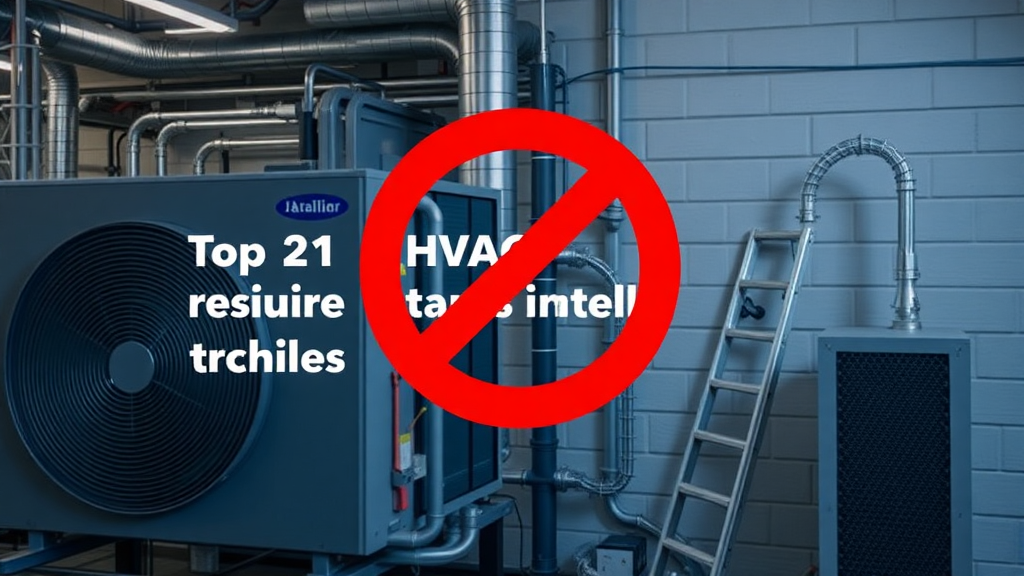
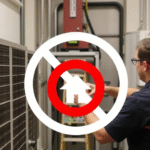
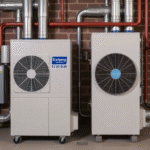
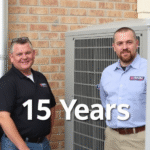
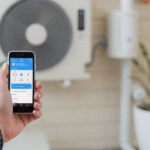
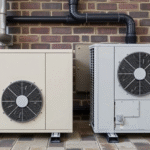
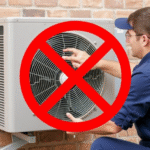
Leave a Reply